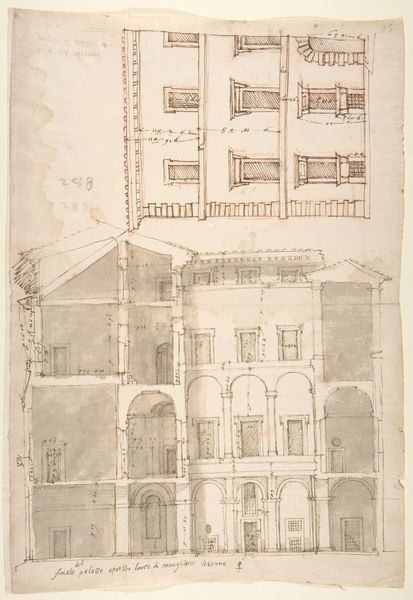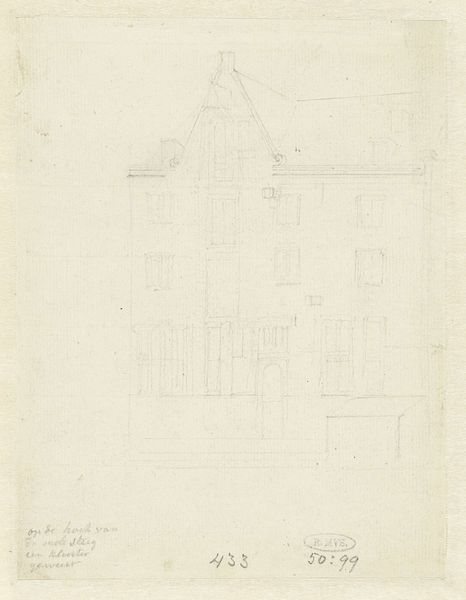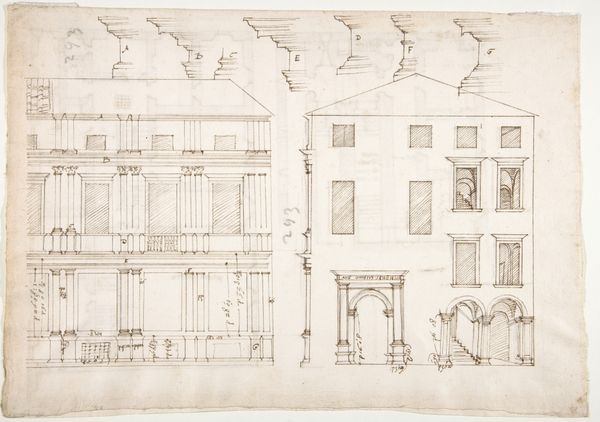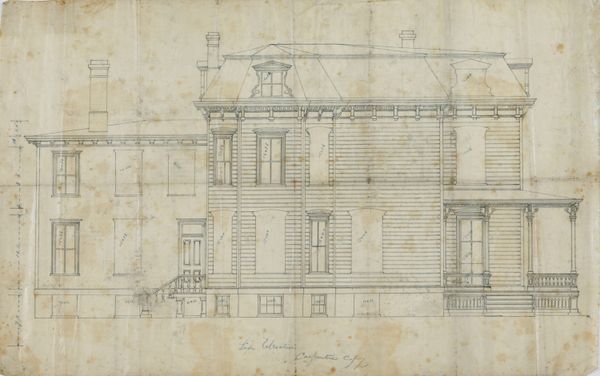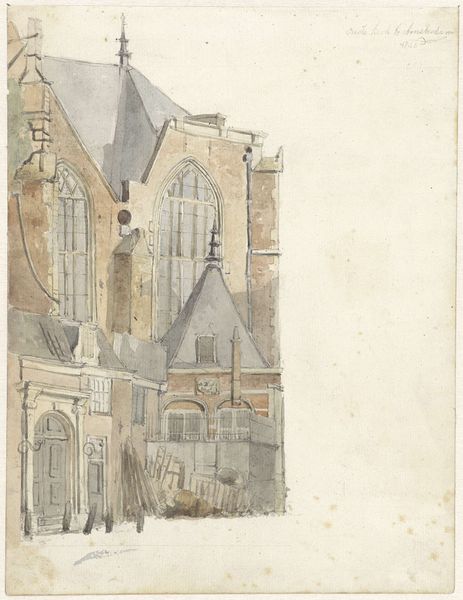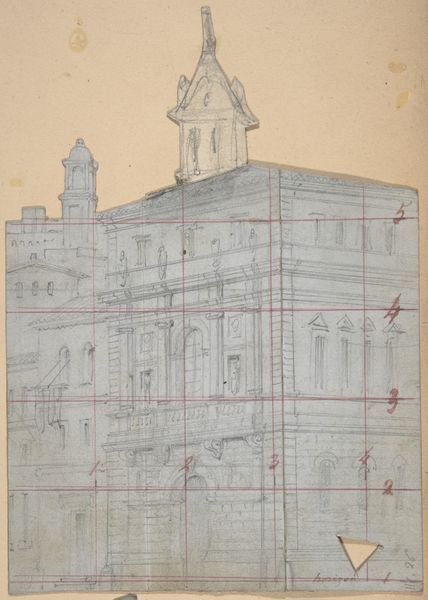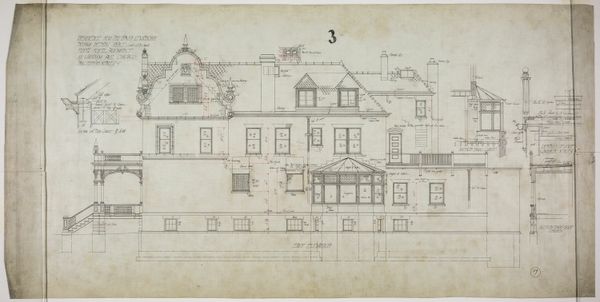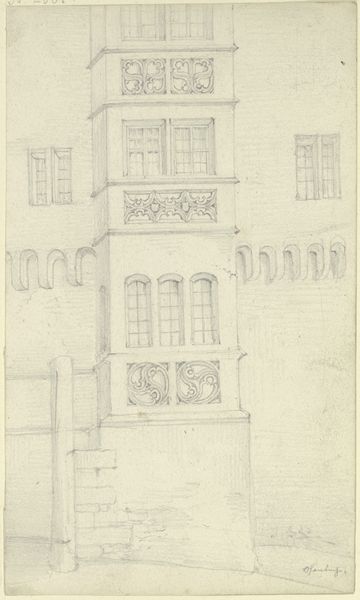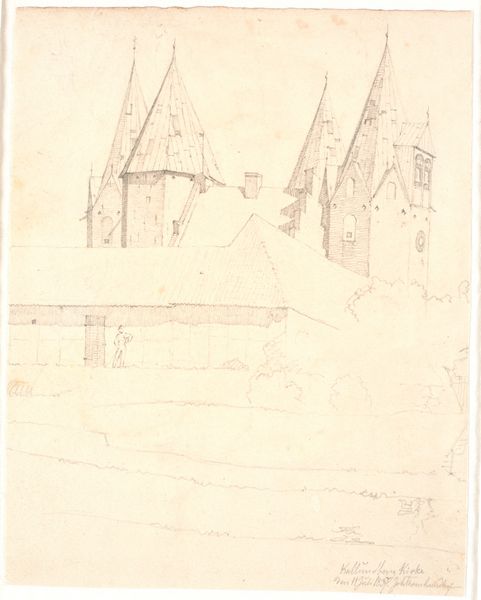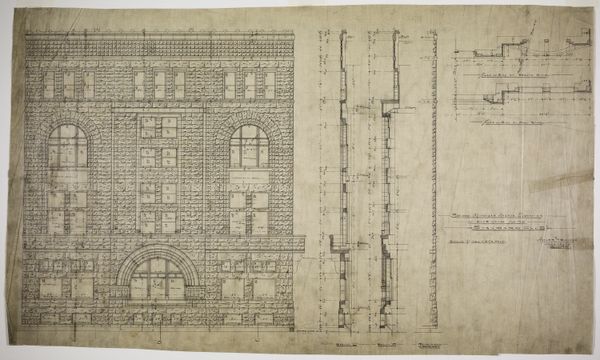
Peter Schuttler II House, Chicago, Illinois, Front Elevation c. 1873 - 1874
0:00
0:00
drawing, paper, pencil, architecture
#
drawing
#
house
#
paper
#
geometric
#
pencil
#
arch
#
academic-art
#
architecture
Dimensions: 62.7 × 53.8 cm (24 11/16 × 21 3/16 in.)
Copyright: Public Domain
Curator: Here we have "Peter Schuttler II House, Chicago, Illinois, Front Elevation," a drawing by Bauer and Loebnitz from around 1873-1874. Editor: My first impression is one of delicate precision, even with the aged paper and the medium of simple pencil. It has a calm, ordered presence. Curator: Absolutely. And note the level of detail, which speaks to the labor involved in its production. Consider the draftsmen and their conditions: this wasn't mere artistic expression, but skilled work responding to economic needs and available technologies. Editor: Yes, the geometry dominates. It's an exercise in symmetry and proportion, and look at the window placement! There’s a clear hierarchy establishing a strong visual rhythm that brings the whole design together, like a silent, immutable composition. Curator: I see that—the materials shape the social purpose, but it's all underpinned by class. A house like this represents wealth and status made visible. Who was Peter Schuttler, and what part did he play in Chicago's economy to afford such a place? The design merely signifies the end result of economic networks and aspiration. Editor: Perhaps. But within those constraints of the architectural trends of the time, Bauer and Loebnitz were clearly manipulating these accepted forms. The central arch, the subtle curves versus the strong rectilinearity of the rest of the building...these things invite interpretation through the pure relationships between the forms, outside of pure class associations. Curator: Agreed, but look closely; even the 'pure form' manifests within an urban plan shaped by land speculation, the availability of materials such as brick, and construction technologies, as well as consumerist desire. Form is never really 'pure', as it relies so much on material access. Editor: It's a beautifully rendered object. It lets us see something fundamental about human drive to construct and decorate space. The way this facade unfolds to our eyes. Curator: Right. This is all connected to wider patterns of economic progress that rely on the availability of the material, labor, capital, and access that only some can get. It provides valuable context. Editor: Indeed. Seeing its meticulousness invites reflection. Curator: And examining how that image came into being allows an insight into broader relations of making.
Comments
No comments
Be the first to comment and join the conversation on the ultimate creative platform.
